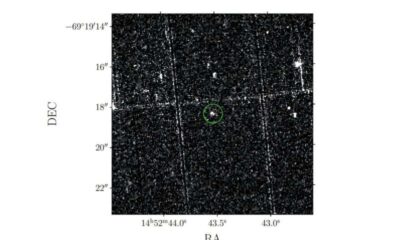Science
Ancient DNA Reveals Surprising Migration Routes to the Americas

A recent discovery in ancient DNA research has the potential to reshape our understanding of how humans migrated to the Americas. The presence of a DNA marker known as Haplogroup X suggests an unknown migration wave that may have occurred more than 12,000 years ago. This finding raises intriguing questions about the routes early humans may have taken to reach the continent.
Researchers have long been puzzled by how Haplogroup X appeared in the Americas without leaving a clear trail through Alaska or Siberia. This rare maternal lineage is typically found in regions such as Europe, the Middle East, and parts of North Africa. It has also been identified among Indigenous populations in North America, particularly in the Northeast and Great Lakes regions.
Dr. Krista Kostroman, a genetic medicine specialist and Chief Science Officer at The DNA Company, elaborated on the significance of haplogroups. She stated, “Haplogroups are like family seals. They are distinctive genetic marks passed down over thousands of years, connecting us to ancestors who lived in entirely different landscapes, climates, and cultures.” These markers rarely change, making them valuable tools for tracing ancient human migrations.
The most common maternal haplogroups among Native American populations are A, B, C, and D, which can be traced back to various regions of East Asia. These findings illustrate the Asian origins of most Native American maternal lineages. The unusual presence of Haplogroup X complicates this narrative, as it does not fit neatly into the established migration patterns.
Haplogroup X is divided into subgroups, with X2a predominantly found among Indigenous groups in North America and X1 primarily located in North Africa and the Near East. Dr. Kostroman emphasized the importance of this rarity in tracing human history, stating, “When an uncommon marker appears in distant, disconnected regions, it signals a shared connection in the deep past.”
While some researchers speculate that Haplogroup X may indicate a direct European migration, its rarity in Siberia and Alaska suggests otherwise. Instead, it may represent an earlier migration, possibly via a coastal route. The prevailing theory posits that X2a arrived in North America during the late Ice Age through the Bering Land Bridge, alongside other maternal lineages.
Dr. Kostroman noted the potential for alternative scenarios. She explained, “Small groups carrying Haplogroup X may have arrived earlier, or it may have entered the Americas in multiple waves alongside other lineages.” This complexity suggests a more intricate history of human migration than previously understood.
The implications of these findings have led to renewed discussions about the possibility of trans-Atlantic crossings during the last Ice Age. Dr. Kostroman cautions against jumping to conclusions, highlighting that the narrative surrounding Haplogroup X has evolved. She remarked, “Over the past two decades, Haplogroup X has shifted from being the centerpiece of bold trans-Atlantic theories to a subtle but powerful clue in understanding human prehistory.”
This research underscores the complexity of human migration and emphasizes that the journey to the Americas may have been not just a single event but a tapestry of movements, connections, and explorations across Eurasia long before humans reached the New World. The ongoing study of ancient DNA continues to unveil the intricate patterns of our shared ancestry, offering a deeper insight into the story of humanity.
-

 Entertainment2 weeks ago
Entertainment2 weeks agoKim Cattrall Posts Cryptic Message After HBO’s Sequel Cancellation
-

 Entertainment1 month ago
Entertainment1 month agoSpeculation Surrounds Home and Away as Cast Departures Mount
-

 Entertainment2 weeks ago
Entertainment2 weeks agoLas Culturistas Awards Shine with Iconic Moments and Star Power
-

 Entertainment2 weeks ago
Entertainment2 weeks agoMarkiplier Addresses AI Controversy During Livestream Response
-

 Politics1 month ago
Politics1 month agoPlane Crash at Southend Airport Claims Four Lives After Takeoff
-

 Lifestyle3 weeks ago
Lifestyle3 weeks agoTesco Slashes Prices on Viral Dresses in Summer Clearance Sale
-

 Science3 weeks ago
Science3 weeks agoAstronomers Unveil New Long-Period Radio Transient ASKAP J1448−6856
-

 Health2 weeks ago
Health2 weeks agoWakefield’s Top 13 GP Practices Revealed in 2025 Patient Survey
-

 Sports2 weeks ago
Sports2 weeks agoCommunity Pays Tribute as Footballer Aaron Moffett Dies at 38
-

 Top Stories1 month ago
Top Stories1 month agoAustralian Man Arrested for Alleged Damage to Stone of Destiny
-

 Entertainment1 week ago
Entertainment1 week agoAldi Launches Cozy Autumn Fragrance Range Ahead of Halloween
-

 Sports1 month ago
Sports1 month agoSheffield United’s Young Talent Embraces Championship Opportunity





















